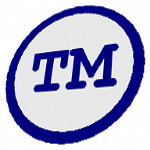By Amy Heller
Law Office of Amy Cohen Heller
 It’s that time of year when we look back at what we did and look forward at where we want to go. It’s also a good time to review what we have and whether we have dotted our “i’s” and crossed our “t’s”. In this article, the “t” stands for Trademarks.
It’s that time of year when we look back at what we did and look forward at where we want to go. It’s also a good time to review what we have and whether we have dotted our “i’s” and crossed our “t’s”. In this article, the “t” stands for Trademarks.
Trademarks are an important — but often overlooked — business asset. Managed and properly protected, trademarks can bring significant value to your business and keep competitors at bay. Based on my work with clients and their U.S. trademark portfolios, here are a few easy-to-miss items to check on as we start a new year:
Has your company changed names, ownership or address since the mark was registered? If so, you may need to review whether an assignment of trademarks has been completed and recorded with the USPTO or whether important information has been updated.
For an existing Registered Trademark, what goods and services does the registration reference, and are these the current goods or services using the mark? If the mark is not being used on the goods and services referenced in the registration, the registration may be unenforceable or– worse yet–subject to cancellation. Goods/services that are not in use can be deleted from a registration; if use has expanded beyond what is stated in the registration, you should consider filing new applications immediately.
Are there registrations for marks which are not in use? To be effective and enforceable, the marks must be actively in use in commerce. Reviewing your registrations and confirming that actual use of the marks are being made on the appropriate products or services is important to do on an annual basis. This will also ensure that you can submit required affidavits to renew marks, and encourage the business to periodically use marks to keep them effective.
Are the proper trademark symbols being used with your marks? For marks which are registered with the USPTO, a ® symbol is appropriate. Non-registered marks can use a ™. If your mark has become registered in the last year, it is good to confirm the ® symbol has replaced the TM.
Is A Watch Service in Place?
Trademark owners are responsible for policing and protecting their trademarks. A watch service can identify pending trademark applications (either nationally and/or internationally) that may potentially infringe your existing marks. If you have a service, you may want to review the marks being watched and determine whether additions or deletions should be made to the list. If you do not have a service in place, it is a good time to consider whether one should be implemented. There are many types of watch services, from U.S. to worldwide watch services. Pricing depends on the number of marks, number of classes watched and the number of countries and can range from a few hundred to a few thousand dollars per year.
Are appropriate licenses in place for marks being used by third parties? A trademark owner is responsible for insuring that its marks are being used properly and with adequate quality control. If you are permitting third parties to use your marks, it is important to have those marks registered to cover the licensed goods and to have a written license in place to maintain that control.
If after reviewing these questions, you see gaps in your trademark process, it may make sense to conduct a trademark audit covering these and related mark items. Chances are if these items are slipping out of your grasp, you are also at risk in related areas. For example, in reviewing some of these issues with in-house counsel, failure to maintain a registration may violate the reps and warranties in contracts or impact a company’s ability to continue selling a product for which it may no longer own trademark rights; and failure to use the appropriate trademark registration symbols could result in the public perception that the mark was generic. On the plus side, keeping the trademark portfolio up-to-date can be key to any M & A activity, making the company and the shareholders look good. Additionally, these steps can provide useful information on where future trademark protection is needed. Taking stock of your trademark portfolio may uncover and avoid potential liabilities down the road. It’s a good time of year to cross those “t’s”.
• Amy Cohen Heller is an Intellectual Property Attorney specializing in Trademark Law. Her previous experience includes in-house Trademark Counsel at Fortune 500 companies and counsel positions at IP and large national practice law firms. She can be reached at https://www.linkedin.com/in/amy-cohen-heller-1238bb11 or aheller@achellerlaw.com
© December 2015
 It’s that time of year when we look back at what we did and look forward at where we want to go. It’s also a good time to review what we have and whether we have dotted our “i’s” and crossed our “t’s”. In this article, the “t” stands for Trademarks.
It’s that time of year when we look back at what we did and look forward at where we want to go. It’s also a good time to review what we have and whether we have dotted our “i’s” and crossed our “t’s”. In this article, the “t” stands for Trademarks.